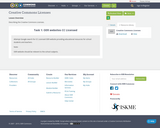
Describing the Creative Commons Licenses.
- Subject:
- Information Science
- Material Type:
- Lesson Plan
- Author:
- Sagender Singh Parmar
- Date Added:
- 08/23/2019

Describing the Creative Commons Licenses.
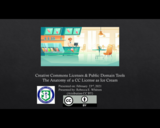
Creative Commons Licenses & Public Domain Tools -- The Anatomy of a CC License as Ice Cream
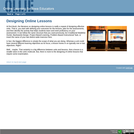
Video about designing online lessons.
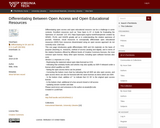
Differentiating open access and open educational resource can be a challenge in some contexts. Excellent resources such as "How Open Is It?: A Guide for Evaluating the Openness of Journals" (CC BY) https://sparcopen.org/our-work/howopenisit created by SPARC, PLOS, and OASPA greatly aid us in understanding the relative openness of journals. However, visual resources to conceptually differentiate open educational resources (OER) from resources disseminated using an open access approach do not currently exist. Until now.
This one page introductory guide differentiates OER and OA materials on the basis of purpose (teaching vs. research), method of access (analog and digital), and in terms of the relative freedoms offered by different levels of Creative Commons licenses, the most common open license. Many other open licenses, including open software licenses also exist.

The focus of many open education projects is to provide access to education. But what does access mean? If the materials are not accessible for each and every student, do they fulfill the mandate to deliver fully open education? The open education movement has helped people in different parts of the world access content that they would otherwise not be able to view or interact with. Open education resources reduce costs for students and allow for greater flexibility for instructors. Accessibility can help push the movement even further forward.
The goal of the OER Accessibility Toolkit is to provide the needed resources needed to each content creator, instructor, instructional designer, educational technologist, librarian, administrator, and teaching assistant to create a truly open and accessible educational resource — one that is accessible for all students.
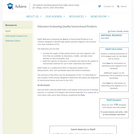
Overview of the EQuIP Rubrics for Math and ELA

This brief anthology was created to partially satisfy a certification course project requirement. Nonetheless, this resource may be useful to education practitioners seeking quick guidance on creating and using open educational resources in their instructional practices. It contains handbooks and guides on intellectual property rights and OER development practices that should provide some insights into this developing area of instructional support.
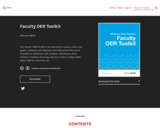
Short Description:
The Faculty OER Toolkit is an information resource about and guide to adapting and adopting Open Educational Resources. Included are definitions and examples, information about Creative Commons licensing, and tips on how to adapt and/or adopt OER for classroom use.
Long Description:
The Faculty OER Toolkit is an information resource about and guide to adapting and adopting Open Educational Resources. Included are definitions and examples, information about Creative Commons licensing, and tips on how to adapt and/or adopt OER for classroom use.
Word Count: 4579
ISBN: 978-1-77420-044-5
(Note: This resource's metadata has been created automatically by reformatting and/or combining the information that the author initially provided as part of a bulk import process.)
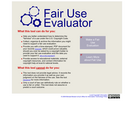
What this tool can do for you: 1). Help you better understand how to determine the "fairness" of a use under the U.S. Copyright Code. 2). Collect, organize & archive the information you might need to support a fair use evaluation. 3). Provide you with a time-stamped, PDF document for your records [example], which could prove valuable, should you ever be asked by a copyright holder to provide your fair use evaluation and the data you used to support it. 4). Provide access to educational materials, external copyright resources, and contact information for copyright help at local & national levels.
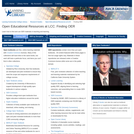
Open textbooks are free, online learning materials with Creative Commons licenses. Many of the collections will have links to the same books, but each will have a particular focus, and items you can't find in other collections. OER repositories contain more than just open textbooks. All content featured within these pages is free but usage rights vary. Materials in these repositories are released under a Creative Commons license while some are in the public domain.

Performance Objectives: Understand what content curation is and how to utilize itIdentify the steps for successful adaptation or curation of OERRecognize and determine the best places to search for OERAdopt a resource by downloading it, printing it, or linking to itOER refers to educational materials that include permission for anyone to use, modify and share. In its simplest form, the term OER describes any educational resources (including curriculum maps, course materials, textbooks, streaming videos, multimedia applications, podcasts, and any other materials that have been designed for use in teaching and learning) that are openly available for use by educators and students, without an accompanying need to pay royalties or license fees.
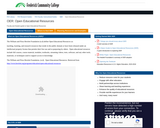
A guide which provides an overview of OER resources, links to OER repositories, and planning resources and examples created and used at Frederick Community College.
Under the Planning Resources and Examples tab, there are course cartridges for an Intro to OER course that introduces faculty to Open Educational Resources and planning resources for OER adoption. In the course, participants will be introduced to the meaning of Open, laws surrounding the distribution of educational content, and how to find openly licensed materials for use in a class. Participants will apply concepts to the creation of a mini module in their discipline.
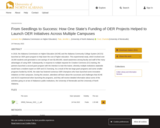
In 2018, the Alabama Commission on Higher Education (ACHE) and the Alabama Community College System (ACCS) launched an OER grant program to help lower the cost of higher education. This experimental study, which involved over 18,000 students and generated a cost savings of over $2,000,000, raised awareness among faculty and staff of the many advantages of using OER. Subsequently, in response to multiple requests for Creative Commons (CC) training, the partners launched a second grant program with the intention to train-the-trainer, whereby multiple institutions statewide would have a resident expert on OER and CC licensing. As a result of the two large grant programs and some smaller programs funded by ACHE, the state has fostered numerous OER champions who have launched some innovative initiatives on their campuses. During this session, attendees will learn about the successes and challenges that ACHE and ACCS experienced when launching the programs, and they will receive detailed information about some of the activities going on at two of Alabama’s public institutions, the University of Montevallo and the University of North Alabama.

This resource provides guidance for school districts when considering OER for adoption as well as currently available full-course openly licensed resources to consider.

In 2022, the #GoOpen movement transitioned from a federal initiative to launch the #GoOpen National Network, a national community of educators and leaders who use and support open educational resources and practices (OER/OEP) to equitably improve teaching and learning for all.
This resource offers enduring value and guidance for districts choosing to transition to the use of openly licensed educational resources to improve student learning in their schools. Openly licensed educational resources (OER) enable districts to reallocate significant funds currently spent on inflexible, static learning materials to resources and activities that accelerate the transition to digital learning. These include implementing new professional learning programs for teachers, developing a robust technology infrastructure to support digital learning, and funding new leadership roles for educators who curate and create openly licensed educational materials.
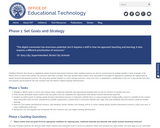
#GoOpen Launch Packet: Phase 1
#GoOpen Districts that choose to implement openly licensed educational resources when existing resources are due for renewal start by putting together a team of people at the district level to review and evaluate the resources and what is needed. The team decides which content areas and grade levels might be appropriate candidates for replacement by openly licensed educational resources. The team then decides whether to curate existing resources, create new ones, or implement a combination of the two. It also decides how they will organize and incorporate the new resources into the district’s digital learning infrastructures.
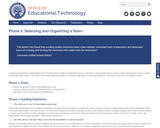
#GoOpen Launch Packet, Phase 2: In selecting and organizing an implementation team, #GoOpen Districts identify key stakeholders from across the district to play important roles in creating, curating, and leading the transition to openly licensed educational resources. Once selected, the #GoOpen team works together to determine the appropriate roles and responsibilities for each member of the team and to organize its work.
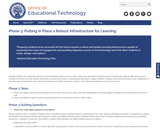
#GoOpen Launch Packet, Phase 3: #GoOpen Districts that implement openly licensed educational resources at scale need a robust and comprehensive infrastructure for learning that supports high-speed access to resources and devices for both students and teachers in school and at home. In determining their district’s digital readiness, #GoOpen teams take infrastructure into consideration in the early stages of planning to ensure that the infrastructure is reliable and secure, and that every student has equitable access to the resources.

This Launch Packet is designed for districts that have decided to implement a systematic approach to incorporating openly licensed educational resources into their curriculum by becoming a #GoOpen District. This is Phase 4 of the systematic approach.
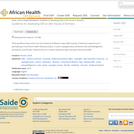
These guidelines have arisen from the University of Western Cape (UWC) Faculty of Dentistry's experiences of participating in the African Health OER pilot project. It covers copyright policy, attribution and acknowledgement procedures, and the peer review process for content released as Open Education Resources (OER).